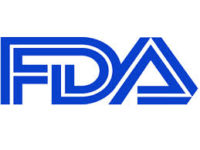Grocery Manufacturers Tout Initiative to Boost Transparency of Chemicals in Food

Editor's Note: The following article by Politico.com reporter Helena Bottemiller Evich details a new initiative, announced Wednesday by the Grocery Manufacturers Association, to help modernize the process of assessing the safety of ingredients used in food products. In turn, the U.S. Food and Drug Administration (FDA) announced yesterday that it has completed a safety assessment review of chemicals in foods, cosmetics, dietary supplements, animal food/feed and veterinary drugs, adding, "Based on the findings, the agency is taking steps to strengthen internal [chemical safety assessment] processes." More information on the FDA's plan is available here.
Food companies are trying to beat the federal government’s push to make chemicals in food more transparent.
The Grocery Manufacturers Association, which represents America’s biggest food companies, announced a major new initiative Wednesday that will give the Food and Drug Administration access to a large database of safety information for chemicals commonly used in processed foods, from Twinkies to almond milk.
Pressure has been building on FDA for years to look more closely at food chemicals, which are mostly self-approved by food companies relying on publicly available science and panels of industry-paid experts. But the agency hasn’t gotten around to it.
The move makes GMA look good. But even the sharpest critics of how the food manufacturers uses food chemicals, whose safety assessments are often not shared with FDA, are welcoming the voluntary industry move. So is the agency.
“It’s certainly a step forward,” said Tom Neltner, a health scientist for the Natural Resources Defense Council, who was briefed on the plan. Neltner has been among the most vocal critics of the current approach to determining the safety of food ingredients, publishing several studies on the issue in the past few years.
“It’s good to see them acknowledge some of the problems with the system and take some positive steps forward,” said Neltner. “We’re glad to see them making that move.”
Leon Bruner, chief science officer at GMA, said he views the initiative as “a big step forward for the industry.”
“We’re going to communicate to the world that we’re taking the lead on this,” he said.
Bruner believes it’s the right time for the food industry to rethink how it approaches food chemicals in part because the entire food safety system is being redesigned under the Food Safety Modernization Act, a bipartisan law passed in late 2010 that aims to prevent foodborne illness outbreaks. Consumer concerns — increasingly amplified on social media and through petition platforms like Change.org — have also reached a fever pitch.
“We’re acutely aware of that,” Bruner said. “We want to make sure [consumers] don’t have reason to be concerned.”
“We always need to remember that our food supply is the safest in the world and this is just going to make it better,” he said.
NRDC, which has upped its food work in the past year, said it will be watching closely to see how the effort is rolled out. “The proof will be in the pudding,” according to Neltner.
The group believes FDA should be reviewing the safety of any new food chemical before it goes into food products in the market. As it is, companies can review current science and use the compounds under a Generally Recognized as Safe (GRAS) determination without agency approval. There are about 10,000 chemicals allowed in food products, 43 percent of which have been deemed generally recognized as safe, according to the Pew Charitable Trusts.
GMA’s effort doesn’t mean FDA will be approving all food chemicals, but it will give regulators much more access to safety determinations, something NRDC strongly supports.
“We think FDA needs to review [new food chemicals] for safety and sign off in some way,” Neltner said. Buthe is very pleased that GMA’s board has committed to ensuring new safety determinations are shared with FDA — it’s voluntary for a company to do so, and many companies don’t.
“That’s a big step,” he said.
GMA’s own database will focus primarily on new GRAS ingredients or new ingredient uses, but will also include some that are currently used in the market. Parts of the database will be made public, but the bulk of the information will only be accessible to FDA officials and GMA members.
The association said FDA officials have recently indicated the agency will soon be re-reviewing some ingredients that have been determined to be GRAS over the years, if there’s new science that warrants another look.
“GMA members are committed to participating in and contributing to the re-review process,” according to a new code of practice that top industry executives agreed to last week.
The FDA responded to GMA’s announcement late Wednesday by saying it supports the push toward better science, but it still encourages companies to voluntarily send the agency their safety determinations, which are posted online.
“We are supportive of any initiative that promotes scientific rigor and transparency to independent GRAS determinations, and look forward to further dialogue with GMA and others in an open exchange of information on independent GRAS determinations to ensure the safety of ingredients added to food,” the agency said in an email.
The food industry will have a concerted focus on food ingredient safety in the coming years. GMA recently partnered with Michigan State University to launch an ingredient safety research center, and the association is also working on a new industry standard for how exactly food chemical safety determinations should be made.
The association hopes to have the new database up and running in 2015 and the new standard, which will be publicly available, out by the end of next year.
Looking for a reprint of this article?
From high-res PDFs to custom plaques, order your copy today!




